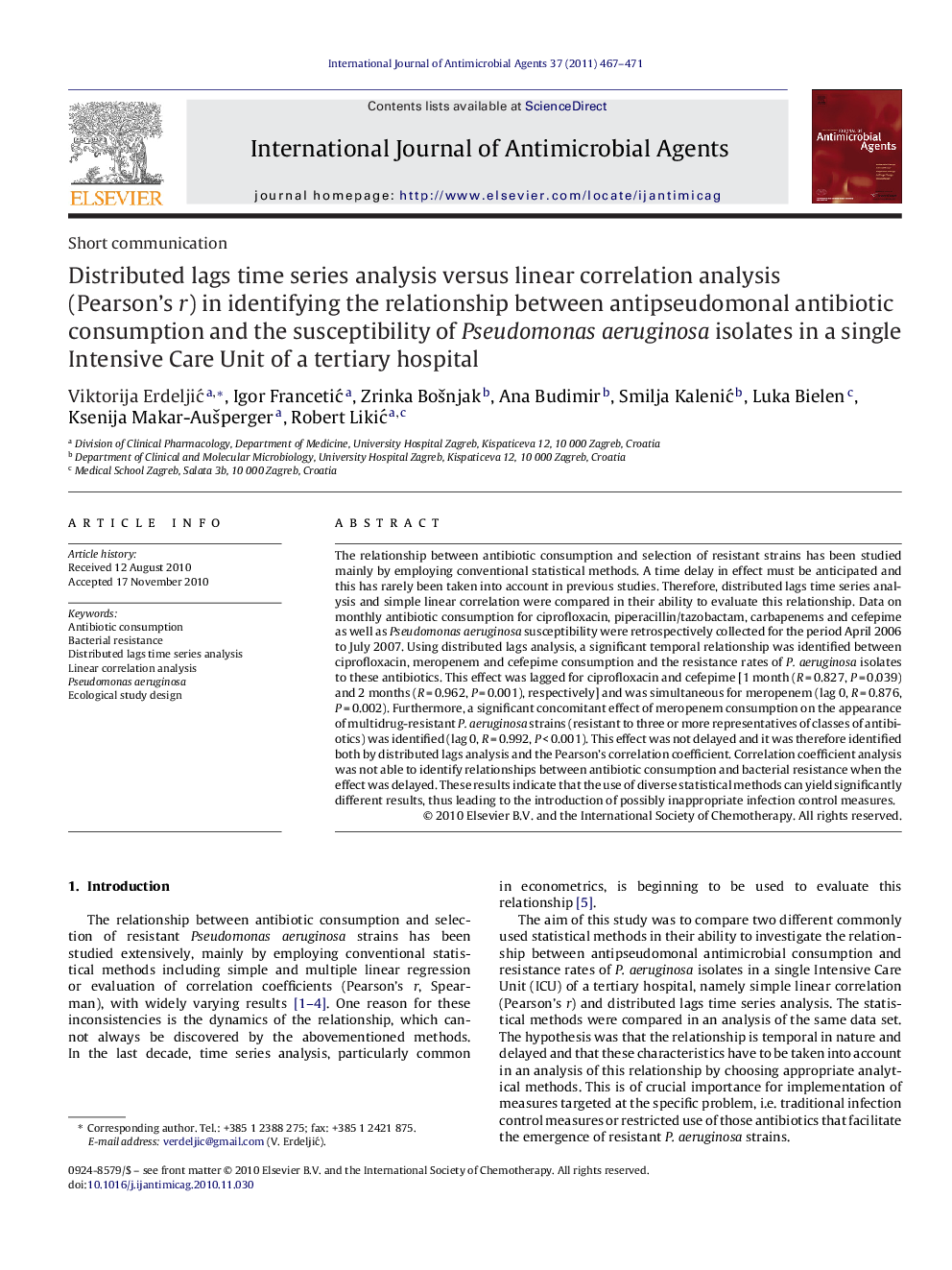| Article ID | Journal | Published Year | Pages | File Type |
|---|---|---|---|---|
| 6118425 | International Journal of Antimicrobial Agents | 2011 | 5 Pages |
Abstract
The relationship between antibiotic consumption and selection of resistant strains has been studied mainly by employing conventional statistical methods. A time delay in effect must be anticipated and this has rarely been taken into account in previous studies. Therefore, distributed lags time series analysis and simple linear correlation were compared in their ability to evaluate this relationship. Data on monthly antibiotic consumption for ciprofloxacin, piperacillin/tazobactam, carbapenems and cefepime as well as Pseudomonas aeruginosa susceptibility were retrospectively collected for the period April 2006 to July 2007. Using distributed lags analysis, a significant temporal relationship was identified between ciprofloxacin, meropenem and cefepime consumption and the resistance rates of P. aeruginosa isolates to these antibiotics. This effect was lagged for ciprofloxacin and cefepime [1 month (RÂ =Â 0.827, PÂ =Â 0.039) and 2 months (RÂ =Â 0.962, PÂ =Â 0.001), respectively] and was simultaneous for meropenem (lag 0, RÂ =Â 0.876, PÂ =Â 0.002). Furthermore, a significant concomitant effect of meropenem consumption on the appearance of multidrug-resistant P. aeruginosa strains (resistant to three or more representatives of classes of antibiotics) was identified (lag 0, RÂ =Â 0.992, PÂ <Â 0.001). This effect was not delayed and it was therefore identified both by distributed lags analysis and the Pearson's correlation coefficient. Correlation coefficient analysis was not able to identify relationships between antibiotic consumption and bacterial resistance when the effect was delayed. These results indicate that the use of diverse statistical methods can yield significantly different results, thus leading to the introduction of possibly inappropriate infection control measures.
Related Topics
Life Sciences
Immunology and Microbiology
Applied Microbiology and Biotechnology
Authors
Viktorija ErdeljiÄ, Igor FrancetiÄ, Zrinka BoÅ¡njak, Ana Budimir, Smilja KaleniÄ, Luka Bielen, Ksenija Makar-AuÅ¡perger, Robert LikiÄ,
